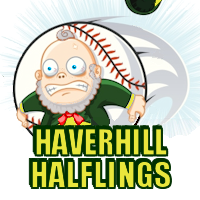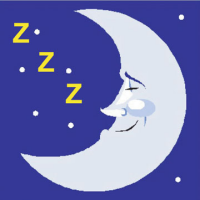Game Date: Apr 21st, 2064
Help
Forum >> Help >> player projection 
 |
|  |
| 
| Post ID | Date & Time | Game Date | Function |
|---|---|---|---|
| #37780 | 07/29/2016 2:28:19 pm | ||
|
Rock777 Joined: 09/21/2014 Posts: 9597 Haverhill Halflings III.1 
| I'm sure each person has their own method. I'll go through one way of doing it using Teun Wilders as an example. First off, there is hardly any point in doing a projection until they have a year or two worth of data. Wilders has three years (6 data points), so we should be able to get a good projection. To start with, you want to look at how much he has grown in each non-static ability. Hitting (9 - 5 = 4 growth) Bat Control (9 - 5 = 4) PD (7 - 3 = 4) Power (9 - 6 = 3) Fielding (5 - 5 = 0) So pretty even hitting growth. Batters are easier to do because each skill is 1 SI. For pitchers defensive skills are only 0.5 SI, while pitching skills are 1.25 SI. Next lets look at how far away from his max he is. I like to choose a number somewhere near the middle of their max POT range to project all players to so I can compare apples to apples. So lets say 123 for a POT 16. Since he currently has 91 SI, that means he has room for (123 - 91 = 32) SI. He has currently gained (4 + 4 + 4 + 3 + 0 = 15) SI. So a good starting point would be to just double all his current gains, and add those numbers to his current ratings. So: Hitting= 9 + (4 x 2) = 17 BC = 9 + (4 x 2) = 17 PD = 7 + (4 x 2) = 15 Power = 9 + (3 x 2) = 15 Fielding = 5 + (0 x 2) = 5 (I will often add a couple points for zeros or ones though because they are growing slower). Now you need to compare these values against the scouting reports to see if they fall in valid ranges. Very good hitting is 15-17, so 17 would be valid. Prolific Slugger is 17-20, so his Power must be at least 17. Below Average fielder is 8 - 9, so he must be at least 8 fielding. So that puts us to 17,17,15,17,8. But this is 3 SI points higher than our target. So now we need to do some fine tuning. For fine tuning, I generally eyeball the graphs, and try to see which abilities have most recently gone up. The hitting and Bat Control values recently went up to 9 (they only show as 8 on the graph), so we will shave a point off each of those. PD also when up to 7 more recently than any of the other stats improved, so we can shave a point off that. This gives us: Hitting = 16 BC = 16 PD = 14 Power = 17 Fielding = 8 Speed = 20 Range = 15 Arm = 17 For a total projected SI of 123 (the target SI that we choose based on 16 POT). This projection may well be off by a little, but it should give you a good idea of what to expect from your player. |
||
| #37815 | 07/30/2016 3:15:56 pm | ||
|
amalric7 Joined: 01/20/2016 Posts: 2237 New York Lancers V.4 
| Uh, Rock - I think you just made that prediction for a 15 POT (range 120-127), not Wilders' 16 POT (128-135). If you estimate for 132 SI as opposed to 123, he might turn out like this (maybe):- Hitting = 17 BC = 18 PD = 17 Power = 19 Fielding = 9 Speed = 20 Range = 15 Arm = 17 |
||
| #37821 | 07/30/2016 5:00:40 pm | ||
|
Huaraches25 Joined: 05/01/2016 Posts: 151 Inactive 
| Lol who cares, I think we all know he's going on to win All-Pros and maybe some MVPs, don't let him be a Paul Goldschmidt (only person with any talent on your team) National Team star as well Edit: would you put someone with low fielding in Center or would you leave him at the corners despite exceptional range and arm. Updated Saturday, July 30 2016 @ 5:02:41 pm PDT Updated Saturday, July 30 2016 @ 5:03:33 pm PDT Updated Saturday, July 30 2016 @ 5:04:02 pm PDT |
||
| #37822 | 07/30/2016 5:10:57 pm | ||
|
newtman Joined: 11/02/2013 Posts: 3343 Inactive 
| I would take the range and arm in CF. Too valuable to waste in the corner outfield positions. Updated Saturday, July 30 2016 @ 5:11:20 pm PDT |
||
| #37825 | 07/30/2016 7:01:20 pm | ||
|
Dcmrulz Joined: 02/14/2013 Posts: 588 Inactive 
| Very nice strategy! I made my own formula to project player SI ratings from their peak thanks to that formula! As for how to do projections, take a look at some of the players you have and their development paths, found on the player page. It should give you an idea of how players grow. In regards to the player himself, that crummy fielding rating is going to hurt if he's at CF or LF, there's about 460-480 chances a season. I would personally stick him at RF, where there are less opportunities for an error that could hurt the team. Hammond and Hayes have the corner spots locked up. Updated Saturday, July 30 2016 @ 7:11:07 pm PDT |
||
| #37833 | 07/31/2016 4:27:46 am | ||
|
amalric7 Joined: 01/20/2016 Posts: 2237 New York Lancers V.4 
| I'd also put him in CF, as newtman reasons. Fielding is widely viewed here as not as important to outfielders as Range (and Arm). Have a perfect example on my own team in Ernie Lawson. The errors are out-weighed by the assists for the most part, and seeing your CF gun down a runner at the plate is very satisfying. |
||
| #60497 | 08/16/2018 6:38:51 am | Apr 29th, 2037 | |
|
phareux56 Joined: 04/13/2018 Posts: 16 Inactive 
| I was just reading through this thread again, I wondered if anything had changed? Updated Thursday, August 16 2018 @ 9:05:19 am PDT |
||
| #60500 | 08/16/2018 3:15:52 pm | Apr 30th, 2037 | |
|
Rock777 Joined: 09/21/2014 Posts: 9597 Haverhill Halflings III.1 
| This is just how I do projections. Its not 100% accurate as some skills will stop developing earlier than others, but I think its a reasonable estimate. | ||
| #60855 | 09/15/2018 12:14:18 pm | Aug 21st, 2037 | |
|
phareux56 Joined: 04/13/2018 Posts: 16 Inactive 
| thanks |
||
| #60867 | 09/17/2018 7:20:51 am | Aug 29th, 2037 | |
|
amalric7 Joined: 01/20/2016 Posts: 2237 New York Lancers V.4 
| Its still the method for doing it, but as Rock says there are some players who you can't predict - not everyone grows at the same rate in the same areas. You might have two hitters who start with straight 7s for the four main hitting skills, and while one will develop into a guy with straight 15s, the other might turn out as 9-19-14-18, and that may happen on occasion regardless of what his scouting report states. As a general idea it works though. |
||